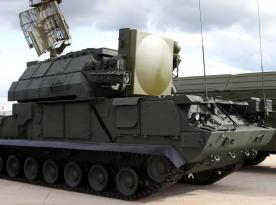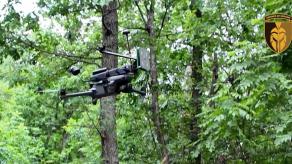Since the October 8th, 2022 strike on the Crimean Bridge which is still in repair and limited operation, the russia still has been looking for the guilty. despite the main version voiced by russia is that the attack was performed by an explosive truck, the scapegoat is sergei volkov, a colonel of Rosgvardia, russian internal force.
This man was the head of the technological development and supply department of the Naval Service Corps. He was arrested in charge of procuring two Orel-BPLA electronic warfare systems of total worth 395.48 million rubles, or roughly $5.1 million. These EW systems were designed for radar detection, tracking and jamming control channels of small UAVs.
Read more: 30K Workers at Flagship of russia's Armored Industry Uralvagonzavod Make Only 20 Tanks a Month
The Orel-BPLA system was developed by the Rostov-on-Don Research Institute of Radio Communications (RNIIRS), although the institute itself does not mention it anywhere. However, the development was widely advertised by russian media, especially the regional ones. In a report from one of those we can find information that two Orel-BPLA systems were procured by the 39th marine detachment of Rosgvardia which is in charge of guarding the Crimean bridge.
In 2021, during tests of the Orel-BPLA, the system turned out to be completely useless due to "the lack of technical capability of radio suppression of UAVs in certain radio frequencies and even the most common data exchange channels," end of quote. Year after, in summer 2023, Rosgvardia's deputy director suspended utilizing the Orel-BPLA by order.
Both the looks of the Orel-BPLA and its declared characteristics are unknown. It is not mentioned among the products made by RNIIRS, just as any other similar product. Based on the description we have, the main the purpose of this system was to counter civilian use drones and apparently this $25-million-device could not even suppress the Wi-Fi frequencies that are used for piloting such quadcopters.
Most interesting though is that as follows from the words of the russian colonel's defense attorney, Orel-BPLA systems were widely supplied to various security services of russia. Which means the russians paid millions of dollars for useless scrap.
Read more: Success of russian Electronic Warfare Should Not be Overstated, and Here is Why














